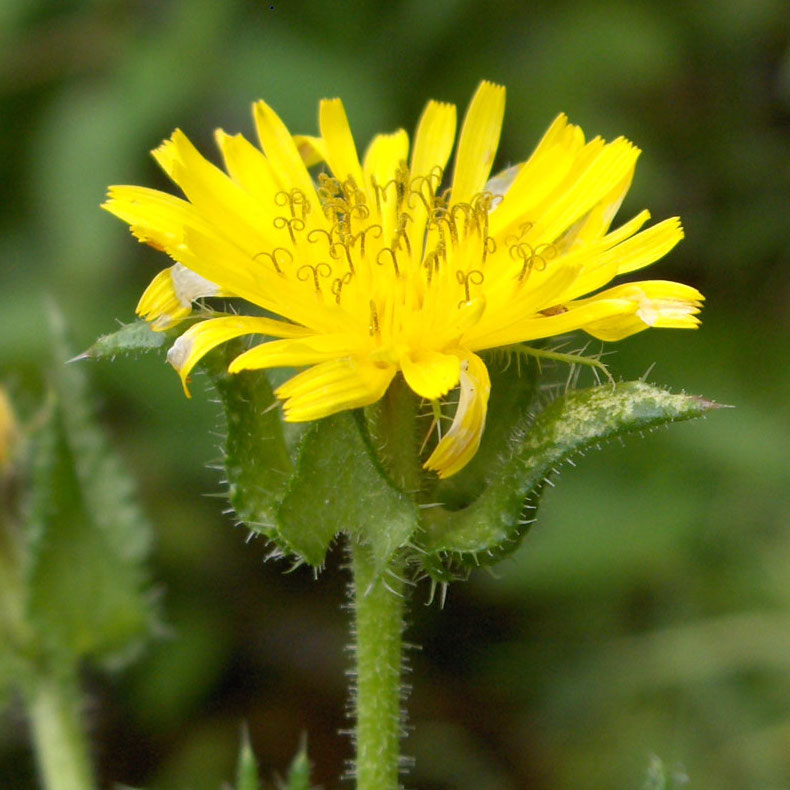
It may not be the prettiest of plants, but Bristly Oxtongue, which flowers from June into the autumn, has some impressive spikes on its leaves.
Photo: Stemonitis, CC BY-SA 3.0, via Wikimedia Commons
Scientific name: Helminthotheca echioides (synonym: Picris echioides)
Other common names: Bitterweed, Ragweed
Conservation status: Locally common
What to look for:
- Family: Daisy family (Asteraceae).
- Flowers: Yellow, each above three to five large bracts, in clusters at end of stems.
- Leaves and stem: Spear-shaped leaves, 10 to 20 cm in length (lower leaves are longer than upper), covered in hooked bristles and with irregularly spaced teeth on leaf edges. There are also bristles on the furrowed, branching stem.
- Height: Up to 90 cm tall.
- Where: Natural distribution is Mediterranean Europe and northern Africa, and naturalised elsewhere, including the lowlands of the south and midlands of Britain. Found by streams, verges, waste and disturbed ground, in rough grass.
- When: Flowers from June to November.
- Habit: Upright, with many branching stems.
- Similar to: Sow-thistle species.
It is easy to spot Bristly Oxtongue from a distance, with its freely branching appearance and yellow flowers atop tall stems. This annual is definitely not the prettiest of plants. It manages to look both stout and straggly, and its stem and leaves are covered in bristles, each of which arises from a ‘pimple’ and ends in a hook. The leaves also have prickly, unevenly spaced teeth along the edges.
This unprepossessing plant is edible, however. The stalks can be eaten and have a refreshing flavour – they need to be peeled first, though, because of the bristles. In the past, Bristly Oxtongue was used as a medicine to get rid of worms.

Did you know…?
…Bristly Oxtongue is an archaeophyte in Britain. This means that, although non-native, it was introduced a long time ago and has become naturalised (the cut-off date generally used is 1492, when Columbus arrived in America and the widespread exchanges of species between America and Europe of the late 15th and 16th centuries began; non-native species introduced after this date are termed neophytes).
…The genus name of Helminthotheca is derived from the Greek word for ‘worm’; the plant was once used as a remedy to treat worms.
More information and references:
Rose, F. and O’Reilly, C., 2006. The Wild Flower Key, 2nd edition. Frederick Warne, London.
Stace, C., 2010. New Flora of the British Isles, 3rd edition. Cambridge University Press, Cambridge.
Published: October 2014
Author: Amanda Scott
Photos: Upper – Stemonitis, CC BY-SA 3.0, via Wikimedia Commons; below (of leaf) – Steve Townsend

